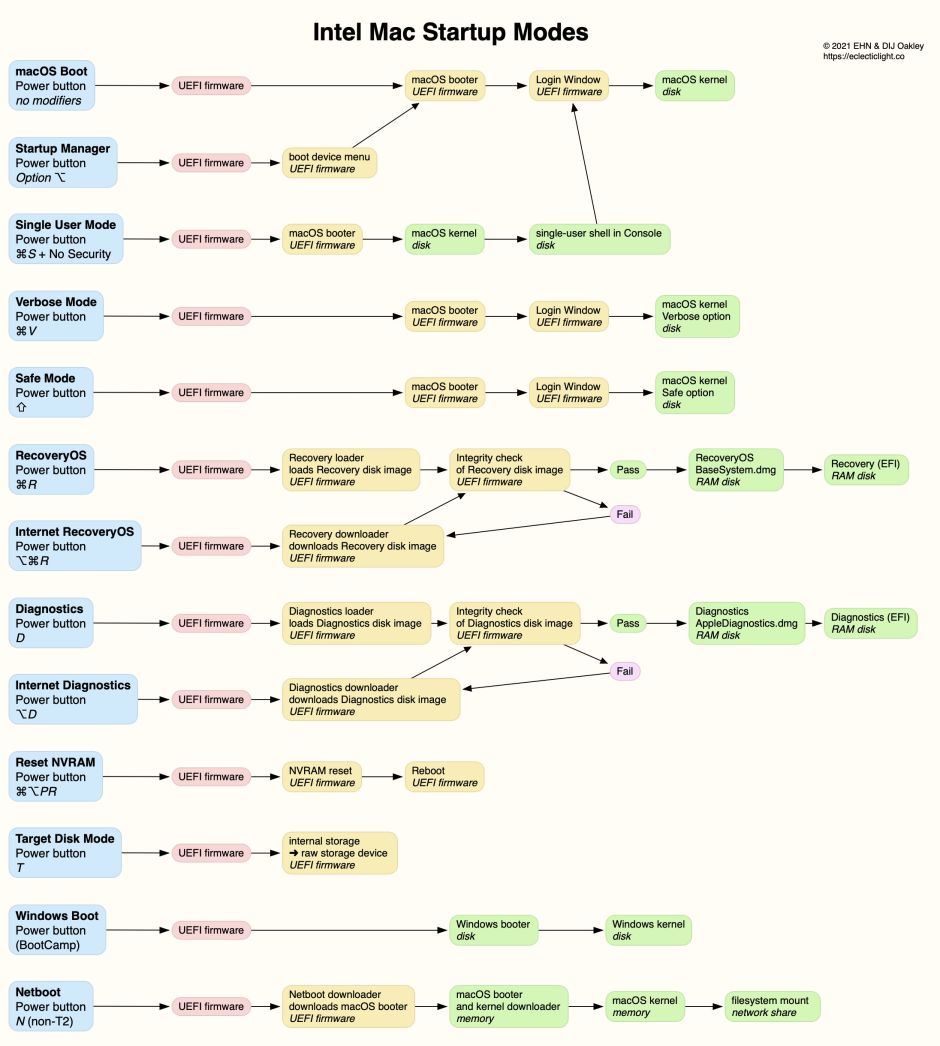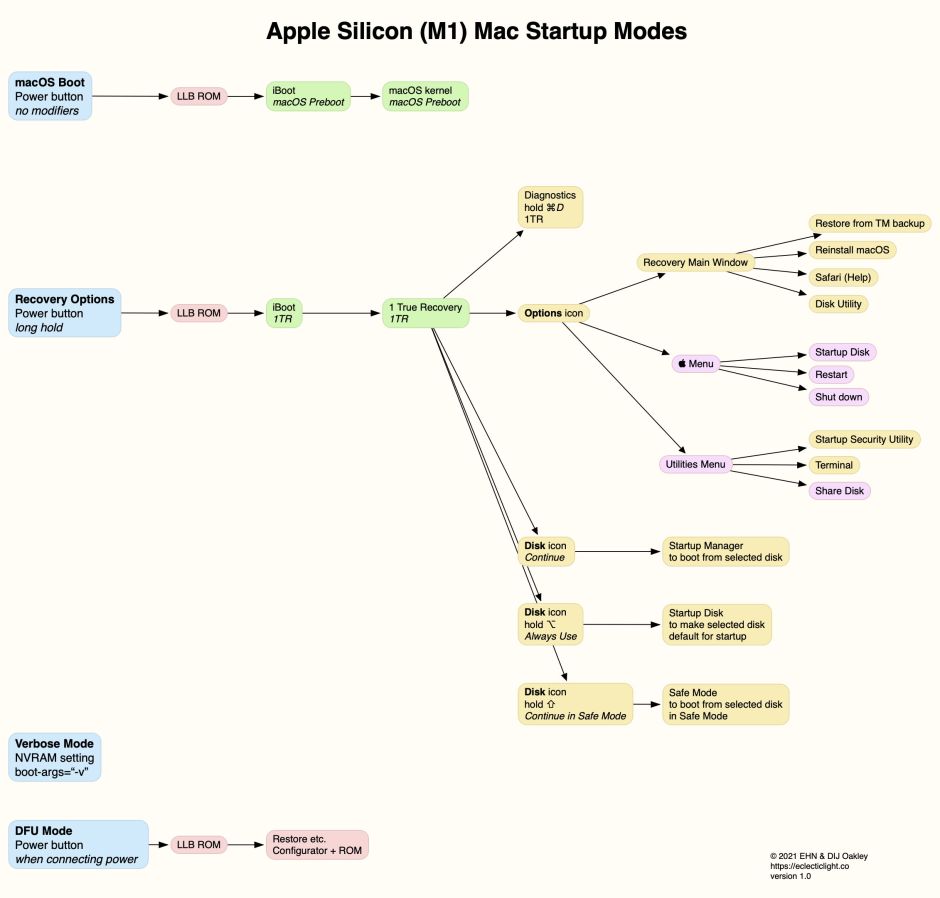Don’t we just love trade secrets? One of the best ways to conceal them is using jargon.
For centuries, the medical profession has accomplished this with a vocabulary of disease derived largely by translating signs and symptoms into Latin and Greek. When someone walks into your surgery complaining that their hands turn blue in the cold, you reassure them that they have acrocyanosis: Greek άκρο meaning extremity, such as the hand, and a mixed Greek and Latin word cyanosis meaning blueness. They go away cherishing that diagnosis, but the doctor has revealed nothing, neither the fact that its cause isn’t well-understood, nor the lack of effective treatment.
Computing has an impenetrable jargon which we can almost make up as we go along, and it’s supported by mysterious rituals, incantations typed at the command line, or for Macs, inscrutable combinations of keys pressed during startup. Display problems? Try zapping the NVRAM, holding down the Command, Option, P and R keys. Which Recovery Mode? Ah, you’ll need Internet Recovery, that’ll be Command, Option and R.
All this is now gone from our quick and shiny M1 Macs. There’s (almost) one Recovery Mode, although we still manage to refer to it using a plethora of names such as recoveryOS, 1 True Recovery, 1TR, 1 True RecoveryOS, and primary recoveryOS, as if one can’t possibly be sufficient for the single action which initiates it all: press and hold the Power button until the display tells you that it’s loading.
Not all the code that runs there is new; recoveryOS, as a cut-down version of macOS, has a long history, and runs traditional tools including Disk Utility, Terminal and Safari. What is radical, though, is how this has all been designed into a complete recovery environment.
Recovery now lives in a container of its own on the internal SSD, rather than being yet another volume alongside System and Data. You can happily wipe what seems like the whole of that SSD in Recovery, but all you’re really doing is erasing the macOS container, leaving its recovery tools in place. Because APFS containers don’t share storage space, this separates Recovery from the bootable System, where there would be greater risk from file system damage.
This also eliminates problems with unintended loss of recovery features: in the traditional recovery system, it’s all too easy to lose local Diagnostics and have to use Internet Diagnostics instead. Because Recovery should now be more robust, it finally does away with remote or Internet recovery, which has been so ponderously slow even with good Internet connections.
All recovery-related features are now integrated into a single entry point, pressing and holding the Power button, a discrete user action which can’t be faked by malicious software. You don’t have to memorise or look up arcane key commands or bend your mind around different variants of local and remote Recovery. To see how this works, here are the many different recovery features as you initiate them on Intel Macs.

Of those thirteen different entry points, some no longer exist in an M1, including Verbose Mode, resetting NVRAM, Windows Boot and Netboot. Both Internet Modes have been removed too. Even so, that leaves seven different startup modes, each with its own key combination and limited range of tools.
Here’s the road map you don’t even need, for Recovery on an M1 Mac.

Not only does an M1 Mac have this fully integrated Recovery system, but in case that fails, there’s a fallback consisting of the previous version, and the ultimate facility to restore the whole of the internal SSD to the current or any previous version of the M1 firmware, recovery and macOS.
For those who don’t have an Apple store just down the road, these offer a new level of robustness and self-sufficiency. You no longer need to know the difference between the SMC and NVRAM and refer to a cheat-sheet of key combinations to press. Gone is much of the jargon, and there are no trade secrets any more. That can only be good for users, whatever their skill and experience.
